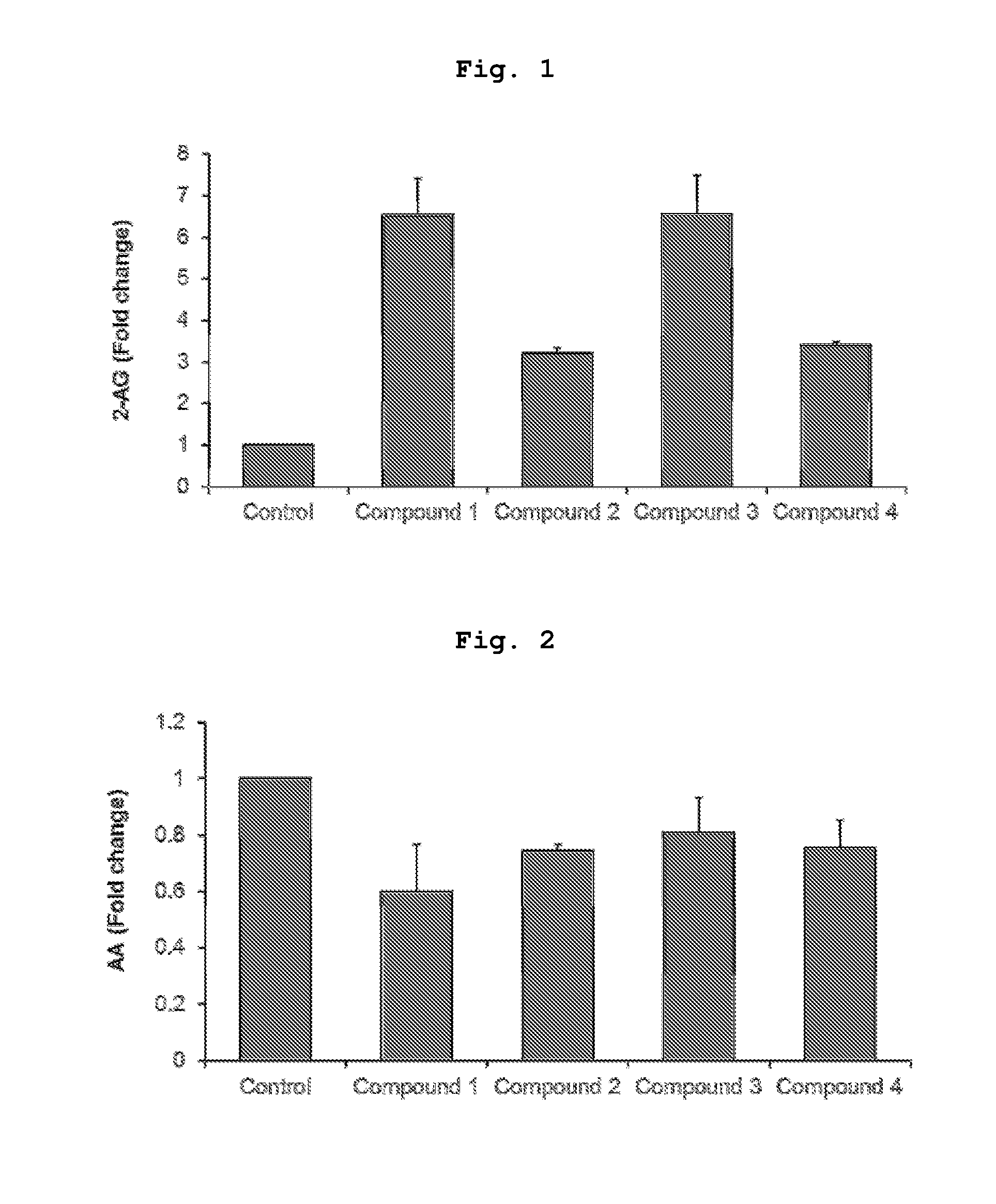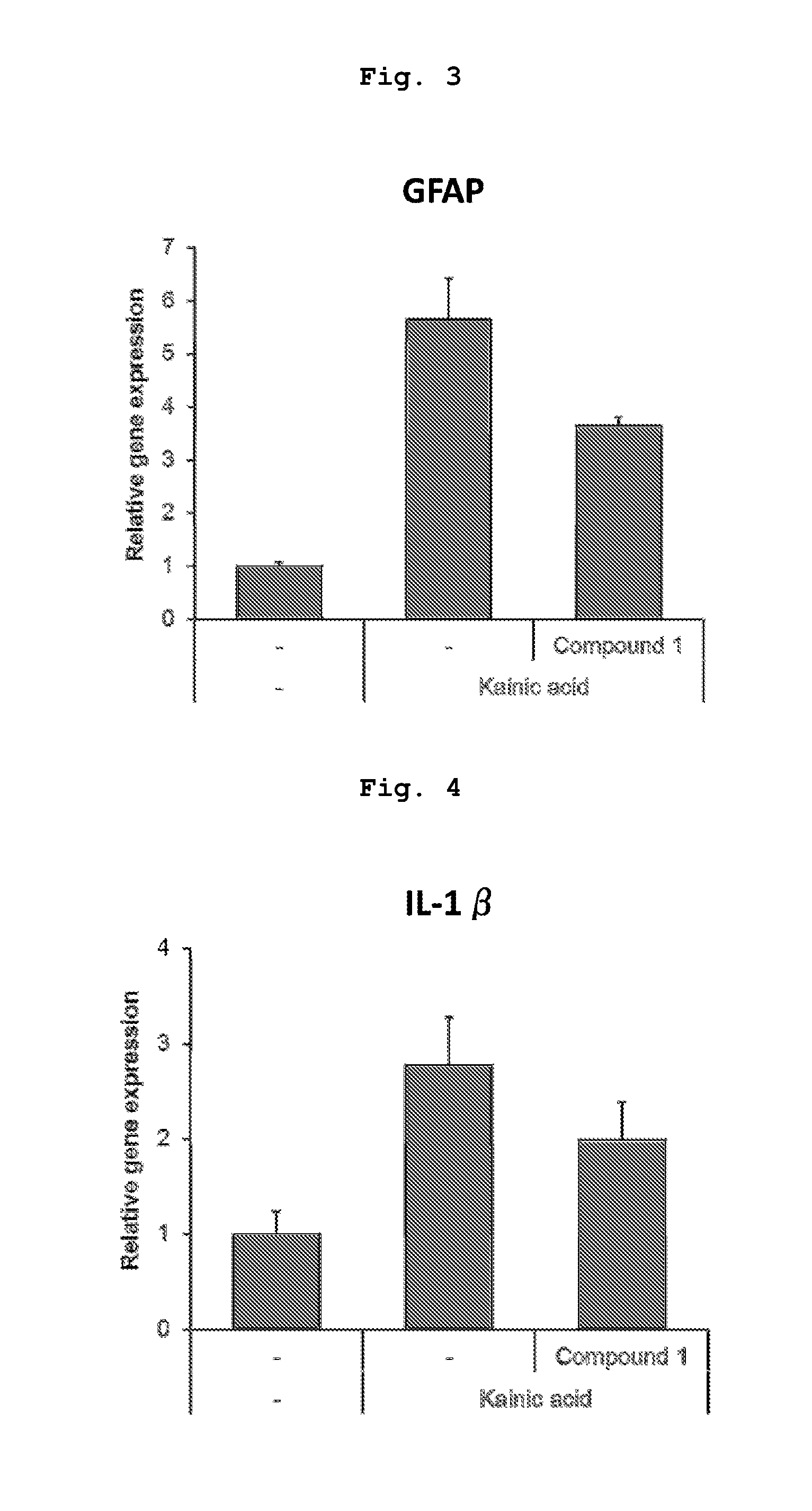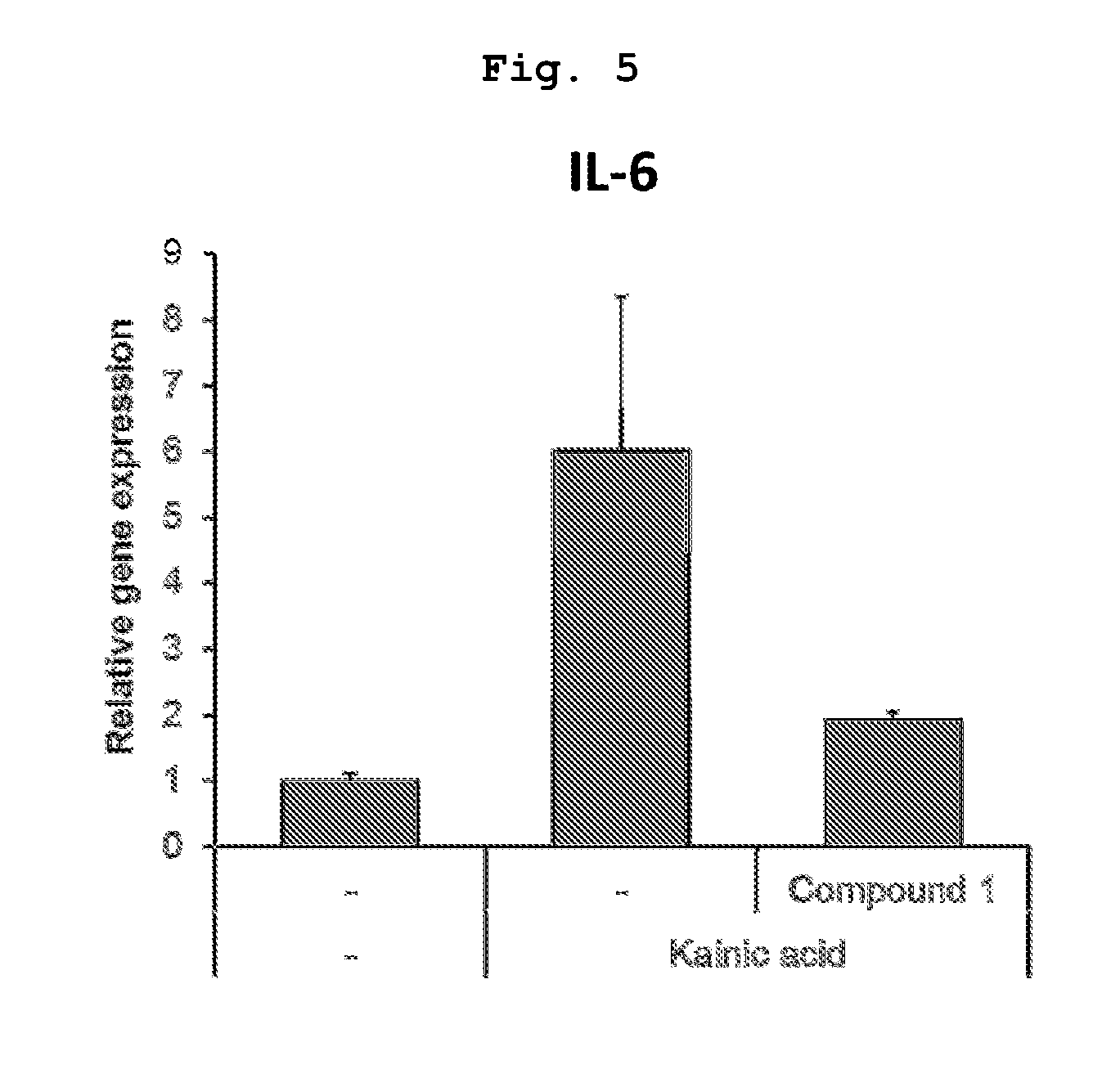4-(piperrazin-1-yl)-pyrrolidin-2-one compounds as monoacylglycerol lipase (MAGL) inhibitors
- Summary
- Abstract
- Description
- Claims
- Application Information
AI Technical Summary
Benefits of technology
Problems solved by technology
Method used
Image
Examples
example 1
1-(4-Phenoxyphenyl)-4-(4-(1,3-thiazol-2-ylcarbonyl)piperazin-1-yl)pyrrolidin-2-one
A) 4-Methoxy-1-(4-phenoxyphenyl)-1H-pyrrole-2(5H)-one
[1515]To a mixture of 4-phenoxyaniline (10 g) and acetonitrile (40 mL) was added a mixture of methyl 4-chloro-3-methoxy-2-(E)-butenoate (9.18 mL) and acetonitrile (40 mL) at 0° C. To the reaction mixture was added a mixture of triethylamine (8.28 mL) and acetonitrile (20 mL) at 0° C. The reaction mixture was heated under reflux for 4 hr and cooled to room temperature. The precipitate was removed by filtration. To the filtrate was added water (80 mL), and the mixture was adjusted to pH 3 with concentrated hydrochloric acid. The reaction mixture was extracted with ethyl acetate. The organic layer was dried over sodium sulfate and concentrated under reduced pressure. To the residue were added toluene (80 mL) and acetic acid (2.0 mL) at room temperature. The reaction mixture was heated at 50° C. for 1.5 hr. The reaction mixture was diluted at room temper...
example 7
2-(4-(5-Oxo-1-(4-phenoxyphenyl)pyrrolidin-3-yl)piperazin-1-yl)nicotinonitrile
[1525]To a mixture of 1-(4-phenoxyphenyl)-4-(piperazin-1-yl)pyrrolidin-2-one hydrochloride (50 mg) and 2-chloro-3-cyanopyridine (55.6 mg) in DMA (1 mL) was added triethylamine (0.093 mL) at room temperature. The reaction mixture was stirred under microwave irradiation at 170° C. for 1 hr. To the reaction mixture was added water, and the mixture was extracted with ethyl acetate. The organic layer was washed with water and brine, dried over sodium sulfate, and concentrated under reduced pressure. The residue was purified by silica gel column chromatography (NH, ethyl acetate / hexane) to give the title compound (25.6 mg).
[1526]1H NMR (300 MHz, CDCl3) δ 2.61-2.84 (6H, m), 3.22-3.35 (1H, m), 3.72-3.87 (5H, m), 3.89-3.98 (1H, m), 6.78 (1H, dd, J=7.8, 4.7 Hz), 6.96-7.06 (4H, m), 7.06-7.14 (1H, m), 7.28-7.38 (2H, m), 7.49-7.57 (2H, m), 7.78 (1H, dd, J=7.6, 1.9 Hz), 8.36 (1H, dd, J=4.7, 2.1 Hz).
example 13
1-(2-Methoxy-4-phenoxyphenyl)-4-(4-(1,3-thiazol-2-ylcarbonyl)piperazin-1-yl)pyrrolidin-2-one
A) tert-Butyl 4-(thiazole-2-carbonyl)piperazine-1-carboxylate
[1527]To a mixture of tert-butyl piperazine-1-carboxylate (15.87 g) and THF (310 mL) were added thiazole-2-carboxylic acid (10 g), triethylamine (16.19 mL), 1-hydroxybenzotriazole monohydrate (14.23 g) and 1-ethyl-3-(3-dimethylaminopropyl)carbodiimide hydrochloride (17.81 g) at room temperature. The reaction mixture was stirred at room temperature for 22 hr. To the reaction mixture were added tert-butyl piperazine-1-carboxylate (2.88 g), 1-hydroxybenzotriazole monohydrate (2.372 g), 1-ethyl-3-(3-dimethylaminopropyl)carbodiimide hydrochloride (2.97 g) and THF (100 mL) at room temperature. The reaction mixture was stirred at room temperature for 6 hr. The reaction mixture was diluted with water, saturated brine and saturated aqueous sodium hydrogen carbonate solution, and extracted with ethyl acetate. The organic layer was dried over ...
PUM
 Login to View More
Login to View More Abstract
Description
Claims
Application Information
 Login to View More
Login to View More - R&D
- Intellectual Property
- Life Sciences
- Materials
- Tech Scout
- Unparalleled Data Quality
- Higher Quality Content
- 60% Fewer Hallucinations
Browse by: Latest US Patents, China's latest patents, Technical Efficacy Thesaurus, Application Domain, Technology Topic, Popular Technical Reports.
© 2025 PatSnap. All rights reserved.Legal|Privacy policy|Modern Slavery Act Transparency Statement|Sitemap|About US| Contact US: help@patsnap.com



